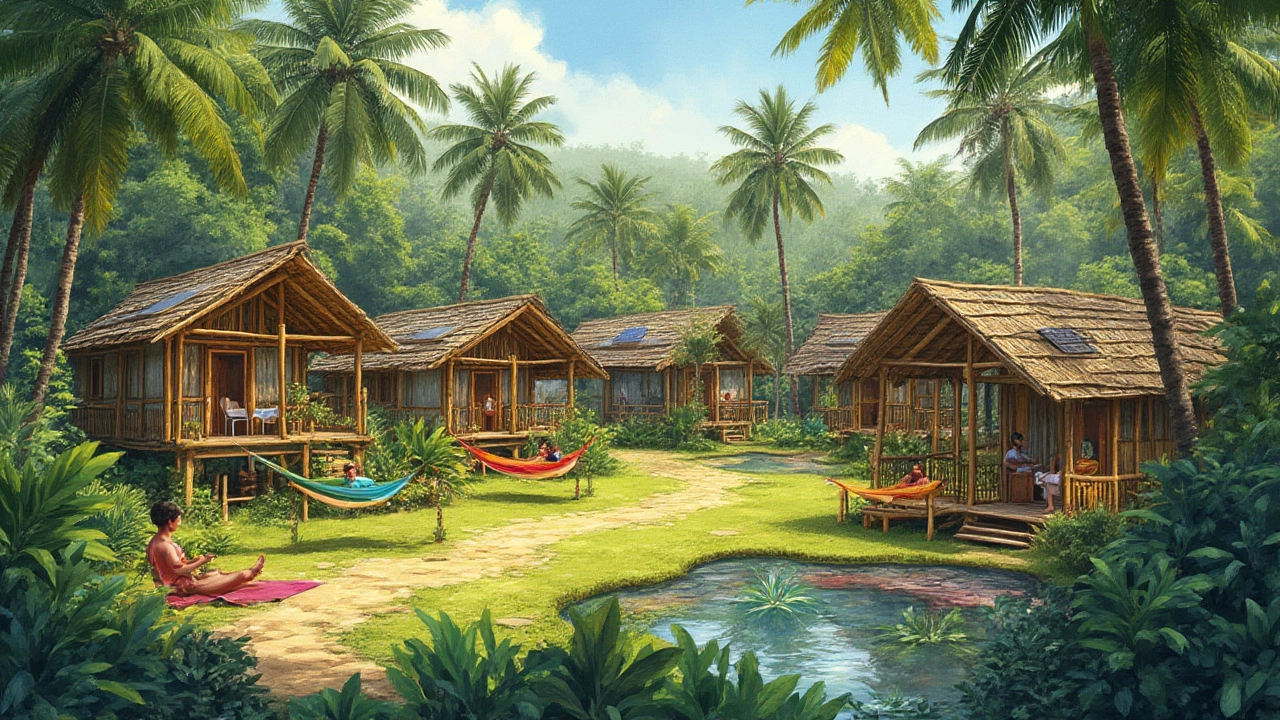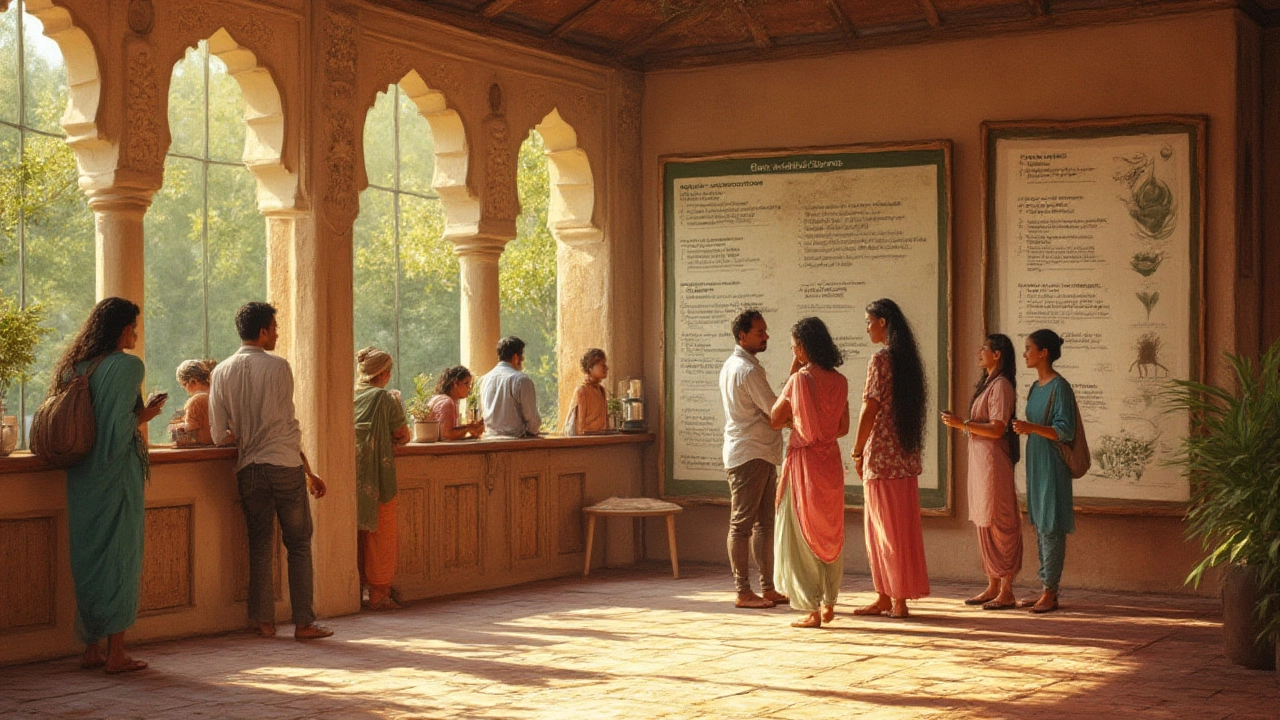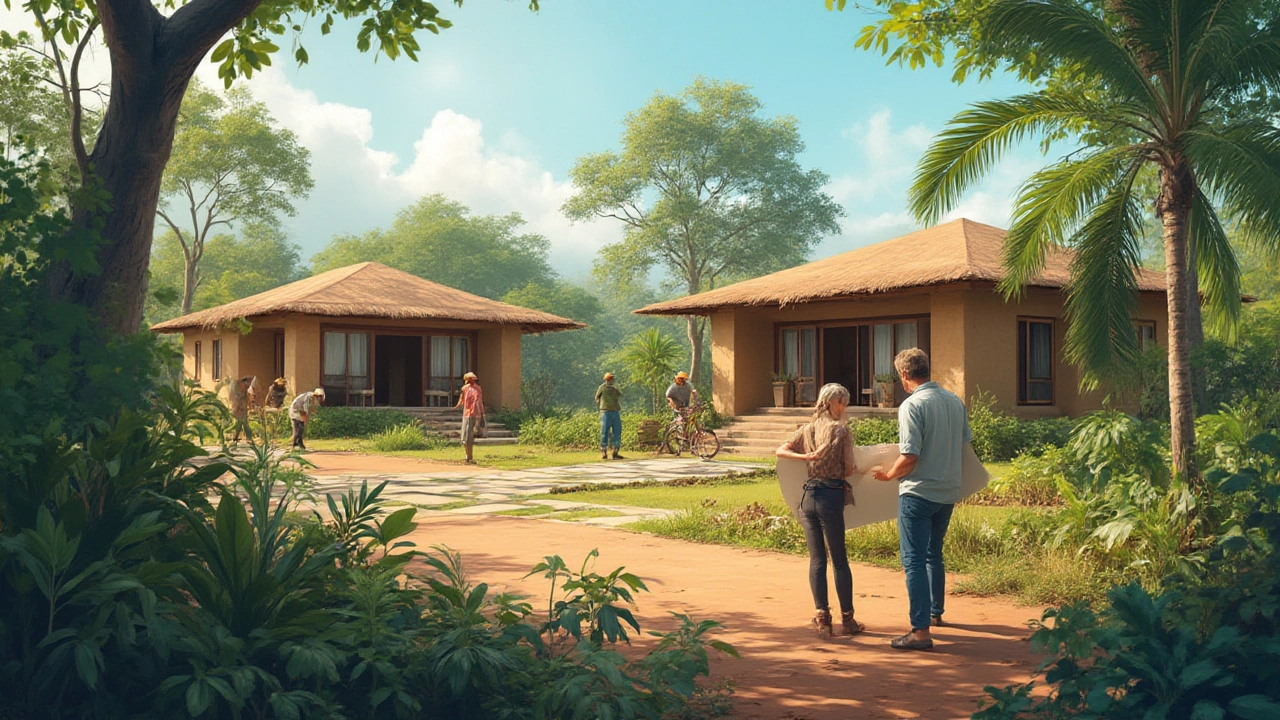Eco Resort Essentials: What Makes a Resort Truly Sustainable?
 Jul, 29 2025
Jul, 29 2025
Picture this: you're sipping coffee on a wooden deck, breathing in crisp, mountain air, surrounded by wildflowers—not a single plastic bottle in sight. The shower feels luxurious, but you know every drop of water is recycled. This isn’t some fantasy escape; welcome to the world of eco resorts, where comfort meets deep respect for nature. The catch? Not every place calling itself 'eco' actually walks the green talk. Greenwashing is out there, and travelers are getting savvier. So, what actually makes a resort qualify as an eco resort? Let’s break down the real deal—beyond the bamboo straws and towel re-use cards.
Sustainable Design: Building With Nature, Not Over It
The heart of an eco resort beats in its foundations. Real eco resorts are planned and built with the environment top of mind—from where they sit on the land, to the materials they use. Take Soneva Fushi in the Maldives: its villas rise on stilts to protect sand dunes and allow for local plant growth. Recycled wood, local stone, even earthen walls come into play—every brick and beam matters. But it doesn’t stop at what’s visible. Behind the scenes, architects design layouts that catch natural breezes, so you need less air conditioning. Large windows, green roofs, and daylight-maximizing spaces make interiors feel fresh without artificial lights blazing all day.
Sometimes, old buildings get a new lease on life. Some of the coolest eco resorts have converted heritage fortresses or rundown farmhouses, saving tons of materials from landfills. Beyond aesthetics, environmental impact studies are a must—smart eco resorts map out local habitats so they don’t bulldoze rare plants or animal nesting sites. And you won’t see toxic paint or chemically-treated wood in an eco resort worth its salt.
But does it really make a difference, you ask? Absolutely. The World Green Building Council found that buildings built with eco-friendly design can cut energy needs by up to 50%. Not only does this shave off the carbon footprint, it actually saves resorts money in the long run. Have a look at these differences in design approach:
| Feature | Traditional Resort | Eco Resort |
|---|---|---|
| Building Materials | Concrete, imported tiles | Recycled/local wood, stone, earth |
| Ventilation | Heavy reliance on AC | Natural airflow, shaded patios |
| Water Usage | No planning for water use | Rainwater harvesting, graywater systems |
| Site Placement | Cleared land, little habitat care | Careful siting, habitat preservation |
Energy and Resource Efficiency: Running On Green Power
A headline for eco resorts: Decrease what you take, use more of what’s already there. Responsible resorts invest in renewable energy, not just paying lip service. Solar panels crop up on roofs and water heaters. Wind turbines run in open landscapes. Take the Six Senses resorts: They report that over 60% of their energy now comes from renewables. Even on cloudy or remote sites, mini-hydroelectric or biogas generators can fill the gap.
The focus isn’t just energy, either. Water can be even scarcer than electricity, especially in offbeat locations. You’ll see clever water-saving tricks everywhere: low-flow fixtures, water recycling plants, and, in some resorts, composting toilets. Organic waste often goes right back into gardens as compost or even fuels biogas digesters to cook your next meal. Talking of meals, eco resorts go all-in on local food supply—cutting plastic transport, supporting regional farmers, and serving up fresher plates.
Even the glamorous extras in eco resorts get an upgrade. Pools might use natural filtration systems (think lily ponds instead of chlorine), linens get laundered with plant-based soaps, and waste gets sorted so religiously it puts city programs to shame. Rockhouse Hotel in Jamaica repurposes glass bottles into walls and art, proving there’s beauty—and utility—in what others call trash.
If you’re keeping score, hotels generate approximately 289,700 metric tons of daily waste worldwide; every bit a resort can cut or reclaim makes a dent. Wondering about daily energy use? Swapping traditional bulbs for LEDs and using sensor-based lighting can reduce resort-wide electric bills by up to 20%.

Nature and Wildlife: Not Just The Backdrop, But the Priority
Here’s where the real difference kicks in. Eco resorts don’t just exist in nature—they’re part of it. Wildlife corridors replace fences; native plants line every footpath for pollinators. Places like Chumbe Island Coral Park in Zanzibar go even further—the whole island is a protected reserve. Guests snorkel over coral and walk forest trails, but can’t take or touch a thing, ensuring delicate ecosystems stay safe.
Wildlife conservation isn’t just about preserving what’s pretty. Resorts often support rewilding projects: restoring local species, running turtle hatchling releases, funding anti-poaching patrols. Staff might double as field researchers, tracking birds, frogs, or bats at dawn. If you’re keen to learn, many eco resorts offer guests a hand in citizen science, like counting butterflies or identifying native orchids.
But maybe you wonder, is it enough? When done right, these efforts reconstruct damaged environments and help threatened species bounce back. For example, Tiger Mountain Pokhara Lodge in Nepal has been part of efforts that returned snow leopards to nearby hills. Not bad for a holiday, huh?
A quick tip when booking: Ask for a list of certification schemes. Legit eco resorts display their work, whether it’s Rainforest Alliance, Green Globe, or EarthCheck. Look for concrete projects, like planting thousands of mangroves or restoring local wetlands, not just vague claims about 'supporting nature.'
Community and Culture: Locals at the Heart
A true eco resort does more than save trees—it lifts up the people who’ve called the land home for generations. Hiring local staff (not just for show, but in management, too), using locally made products, and offering cultural programs are common signs you’re in the right place. Take Nihiwatu on Sumba Island in Indonesia, which funds school building and healthcare for several villages. Guests aren’t isolated behind walls; they’re nudged to join cultural classes, market tours, or traditional craft nights.
The effect goes both ways. Communities with a stake in tourism safeguard landscapes, preserve folklore, and keep traditions alive. You might see this in small details: fish caught by islanders, baskets woven in the next village, even the music played at sunset dinners. Not every eco resort gets this balance right; some sadly still run as enclaves, but the best spark new opportunities for locals rather than displace or underpay them.
Curious about money? Studies from 2023 show resorts that work closely with local suppliers return up to 46% more revenue to their host communities. This isn’t charity—it’s smart business that ensures sustainable tourism lasts beyond your vacation. If you want to support these kinds of practices, ask resorts directly about their local partnerships.

How to Spot (and Support) a Genuine Eco Resort
Here’s where the travel magic happens—you have more power than you realize. With terms like ‘eco’, ‘green’, and ‘sustainable’ thrown around loosely, knowing what to look for helps you avoid greenwashing traps. Watch for transparency. Eco resorts share their data: percentage of energy from renewables, how much waste is recycled, lists of environmental projects. They hold certifications, not just for show, but as proof of annual audits and real-world impact.
- Look for terms like LEED-certified buildings or Global Sustainable Tourism Council approval.
- Don’t be shy—ask questions about where water comes from, how heating/cooling is managed, what the property does during the off-season, and whether food is locally grown.
- Check online reviews for consistency—travelers spot authenticity fast, and so do watchdog organizations.
- Red flags: vague promises, token gestures (just reusable straws or some potted plants), and lack of data on impacts.
- If possible, go for smaller lodges or brands known for stewardship rather than massive chains with a single ‘eco’ property.
When you choose true eco resorts, your dollars fuel bigger changes—protecting wild places, giving back to communities, and shaping a travel industry that’s actually ready for the future. Want to make travel matter, not just memorable? The answer often starts where you stay.